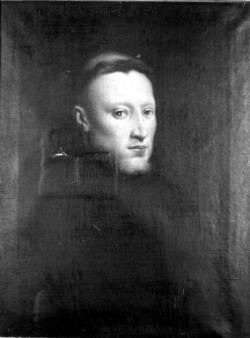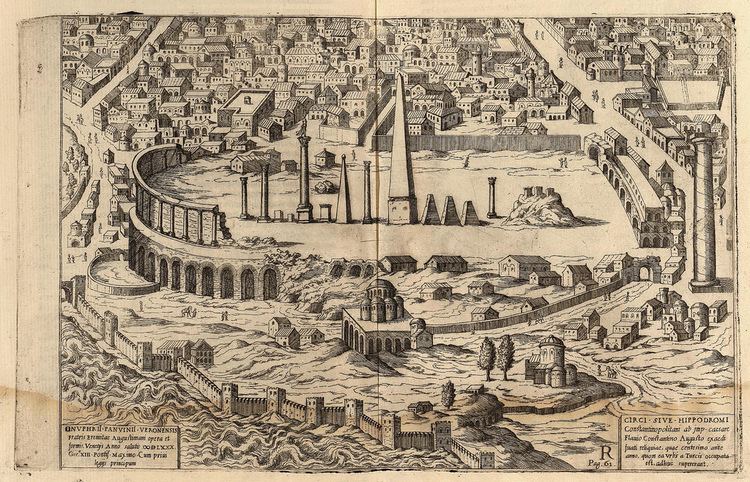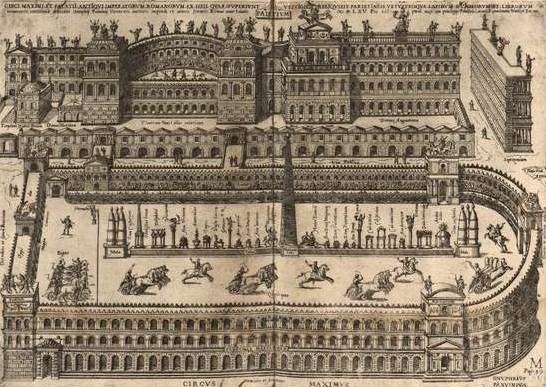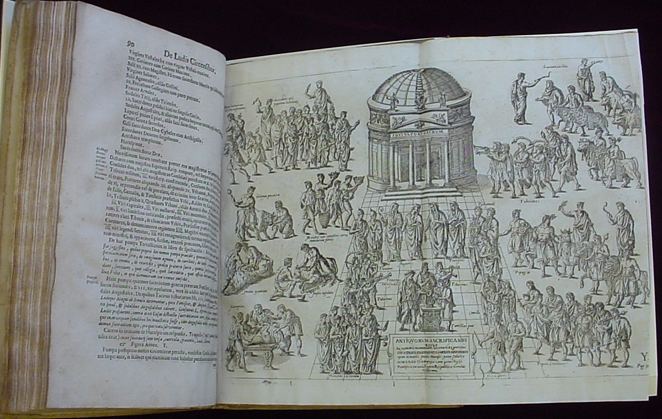Name Onofrio Panvinio | ||
 | ||
Died April 7, 1568, Palermo, Italy | ||
The erudite Augustinian Onofrio Panvinio or Onuphrius Panvinius (23 February 1529 – 7 April 1568) was an Italian historian and antiquary, who was librarian to Cardinal Alessandro Farnese.
Contents

Life and work

Panvinio was born in Verona. At the age of eleven, he entered the order of Augustinian Hermits and in 1539 he went to Rome and became fascinated by the city, whose topography and inscriptions, ancient and medieval history, writers and great papal families he would document through a spectacularly productive brief lifetime.

After graduating in Rome as bachelor of arts in 1553 and teaching the novices of his order in Rome and Florence, in 1557 he obtained the degree of doctor of theology. He visited the libraries of Italy, pursuing historical research and went to Germany in 1559. Refusing the position of bishop, he accepted the more grateful office of corrector and reviser of the books of the Vatican Library in 1556. He died in Palermo while accompanying his friend and protector Cardinal Farnese to the Synod of Monreale, 1568.

He was recognized as one of the greatest church historians and archaeologists of his time. The scholarly printer Paulus Manutius called him antiquitatis helluo ("a glutton for antiquity"), and Julius Caesar Scaliger styled him pater omnis historiae ("father of all history").
His great archaeological map of ancient Rome was produced in 1565. About the same time he began to collaborate with the French engraver Étienne Dupérac, who continued to provide illustrations for posthumous printings of Panvinio's works. Not all of his numerous historical, theological, archaeological, and liturgical works were published, even posthumously; some are preserved in manuscript in the Vatican Library.
His portrait by Tintoretto is in the Galleria Colonna.
Publications
Karl Gersbach, OSA, has published numerous articles on aspects of Panvinio's career. Philip Jacks set his career in the context of early antiquarian investigations in The Antiquarian and the Myth of Antiquity: The Origins of Rome in Renaissance Thought. (Cambridge University Press) 1993. The only modern biography is Jean-Louis Ferrary's bibliographic study, Onofrio Panvinio et les antiquités romaines (Rome) 1996.
